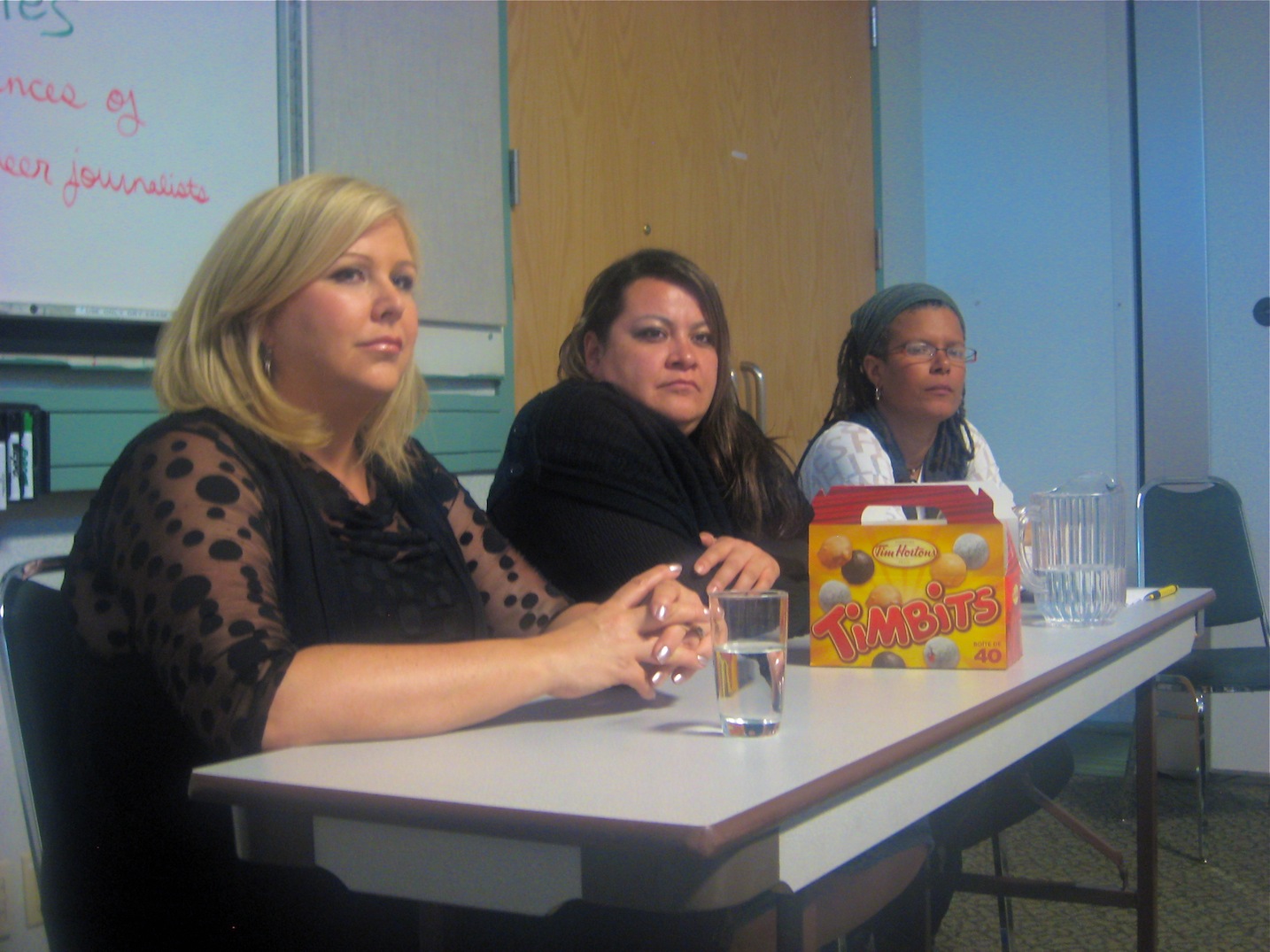Writing Our Stories: The Experiences of Women and Queer Journalists
By Ljudmila Petrovic and Angela Espinoza
On April 3, the Canadian University Press and CWA joined forces to organize a panel discussion in Vancouver to explore the experiences of queer and women journalists.
The speakers
• Tina House, a video journalist for APTN, spoke of working in a bar and absolutely hating it, knowing that she could do so much more. Slowly but surely, through twists of fate and hard work, she made it to where she is now: a video journalist for APTN and winner of the 2011 Amnesty International “Human Rights Journalism Award” for her heart-wrenching show on Canada’s missing and murdered women.
• Natasha Barsotti came from the Caribbean and completed several degrees including an MA in Geography and a Masters of Journalism at UBC. She began writing for Xtra West in 2006 with a challenging and deeply personal column in which she went out of her personal and professional comfort zones to identify as queer in print. She is now a full-time staff reporter at the publication.
• Natalie Clancy has been an investigative journalist for 20 years, fearlessly breaking stories for the CBC on child soldiers, white supremacists and the ongoing sexual harassment within the RCMP.
What kinds of stories do they cover?
Most journalists strive to cover events that are close to their hearts; for women, there are certain topics that hit closer to home than others. Natasha, for example, mentioned that education is one of her favorite beats.
Tina spoke of her work on the BC Missing Women Inquiry. Her cousin had gone missing and the police had done little to help find her. She spoke of warning her girlfriends about walking home late at night – a worry that is so internalized by most women that we rarely think of the nuances of gender in that moment.
All three speakers agreed that, as women journalists, they seem to be more drawn to social justice issues and are more likely to advocate through their journalism.
Tina, Natasha, and Natalie all share the fact that their journalistic careers have focused on such important issues. Their research has proven that there is still much to be done in overcoming these issues.
Barriers
The travel and long hours that often come with the profession can be hard on interpersonal relationships, and there are times when women must make choices between their families and their careers. These women found ways to balance family and work. They have helped pave the way in the fight for women’s equality in the workplace, and they continue to do so.
In broadcasting, specifically, there are huge challenges for women when it comes to their personal appearances. Through her anecdotes, Natalie explained the difficulties women face in having to look a certain way before their voices can be heard.
There is still the underlying belief that journalism is something of a ‘boys club,’ but this has been slowly changing in recent years. It is quite possible for women journalists to be taken as seriously as the men in the field, but as with many other industries, it is important to be fiery and unapologetic in your approach. There are ways to fight back without butting heads, and the panelists emphasized this positive message throughout.
What does it take?
The three panelists come from various walks of life and work in different forms of media, but there were common themes of success in all their stories:
- To succeed in the industry, it is essential to be thick-skinned and in-your-face, to work hard and be independent.
- It is necessary to be respectful and to keep cool when inevitable trials rear their ugly heads.
- Young women now more than ever are dominating the world of journalism but whatever pressures arise, you must always stay strong and not succumb to those pressures — at least not out of defeat.
- Most women have endured some form of abuse directed at their gender, and the strongest way to fight back is through constant reporting and making the public aware.




